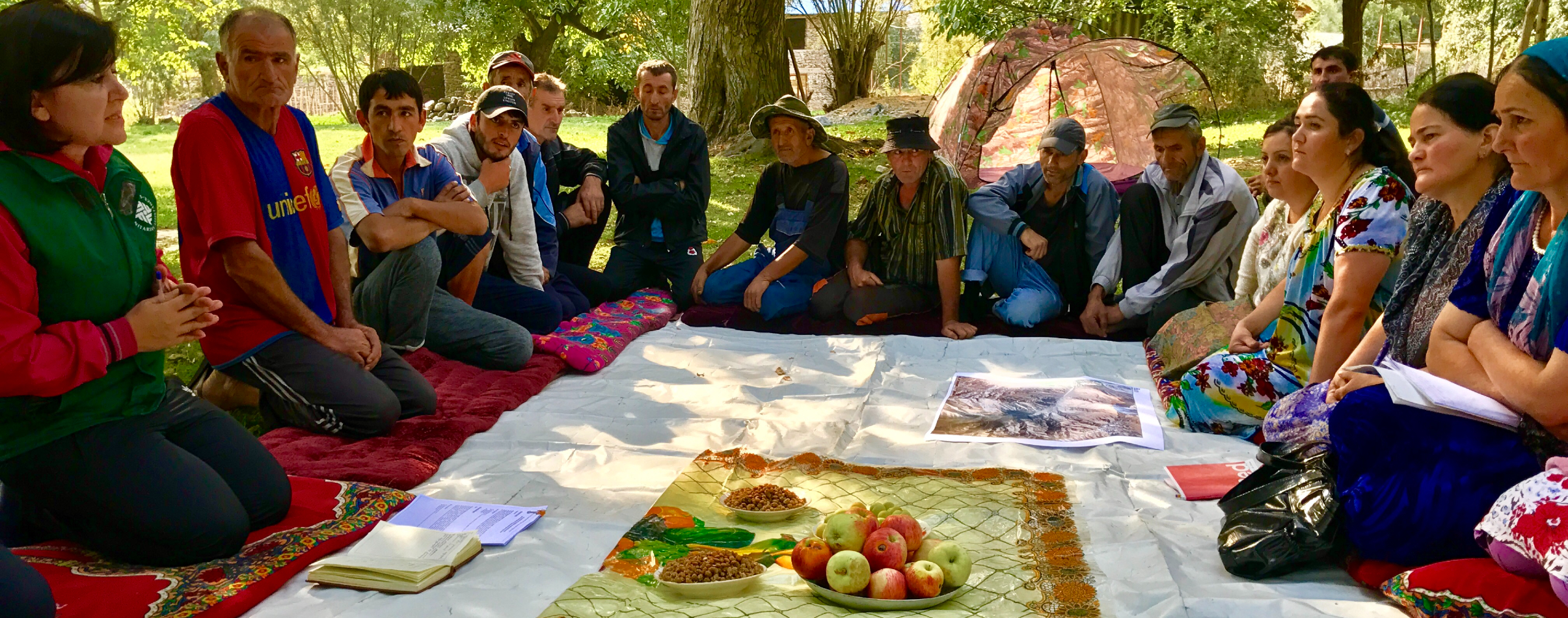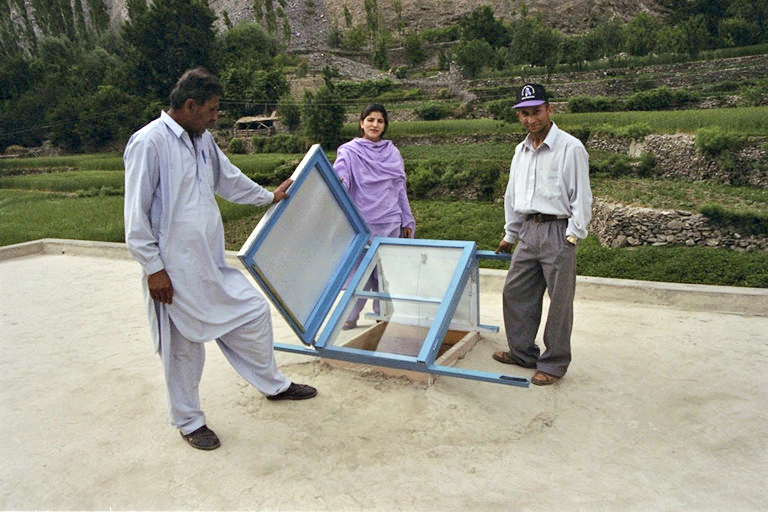
- Programs & Services
- Learning & Development
- Health & Wellness
- Faith & Traditions
- Economic & Financial Planning
- Community Engagement
- Support Services
- News
- Upcoming Events
- Watch Now
- Opportunities
- the.ismaili
- Feedback
- Login

In the 1990s, rural communities in Northern Pakistan were being stifled by smoke from wood-burning stoves. As people burned wood to cook and warm their homes, many fell sick with respiratory diseases like pneumonia. Seniors and children were particularly vulnerable. Meanwhile, students struggled to concentrate on schoolwork amid the fumes. Outside, their choice of cooking fuel was devastating the environment. Deforestation, driven in part by household demand for wood, left hills once covered by trees with facades of dirt and loose stone.
In 1997, the Aga Khan Planning and Building Service’s (AKPBS) Building and Construction Improvement Program (BACIP) responded to the problem with solutions driven by sustainable design. These included fuel-efficient stoves, chimneys to let out smoke, and insulation, as well as double-glazed roof-hatch windows to keep houses warm, while letting in light and fresh air. The products are built by local manufacturers, including carpenters and metal workers, and sold by locals employed by BACIP, all of which has boosted the local economy.
Residents are now less reliant on wood for cooking and warming their homes, and have cleaner air indoors. This has helped reduce acute respiratory infections and related diseases in women and children by up to 50 percent. Meanwhile, the environment has been healing. By 2011, the changes had saved 100,000 tonnes of wood and were preventing nearly 160,000 tonnes of carbon dioxide emissions every year. This success earned the initiative global recognition, including the Ashden Award for Avoided Deforestation.

His Highness the Aga Khan spoke about the significance of improving housing as a part of development programs in an interview with La Cohorte in March 2019. “By working on people’s homes, we are working on basic needs and this then has an impact on several generations in the family,” he said.
Thoughtful design and architecture, such as the changes implemented in northern Pakistan, can play a critical role in tackling environmental problems and social issues. The Aga Khan Agency for Habitat (AKAH), which was created in 2016 and brought together several AKDN agencies including AKPBS, focuses much of its work on the built environment in order to improve living conditions and create safer spaces to help communities in South and Central Asia facing threats posed by natural disasters and climate change.
AKAH also uses environmentally sustainable architectural principles to create resilient public and community buildings. Completed in 2017, the Bamyan Hospital in Afghanistan was built by AKAH using the traditional “rammed earth” construction method that makes use of readily available local resources, including soil, water and cement, and leaves behind a relatively low carbon footprint. With over half of the building’s energy sourced from nearby solar panels, and many natural green spaces intended to foster healing, environmental sustainability permeates through its daily operations.
Through sustainable and resilient architecture, AKAH seeks to ensure that communities can thrive. According to Kira Intrator, Habitat Planning Lead at AKAH, the role of architectural design in climate change adaptation extends beyond a single house or building design. “Spatial planning has tremendous power,” she says, explaining that planning proactively helps communities become more resilient in the face of intensifying climate change risks, such as more frequent and catastrophic natural disasters.

In the villages around Chitrawad, a region prone to flooding and earthquakes in Gujarat, India, AKAH worked with the local government and community to create development plans to help the area make the most of its resources and become more resilient to environmental risks. Working with village members, AKAH improved the natural drainage system by installing roof rainwater harvesting systems that make use of floodwater to recharge aquifers. Locals are also switching to more environmentally sustainable practices of wastewater management and solid waste disposal, which will have a lasting environmental impact.
One key element of AKAH’s mission has been involving communities in the projects, ensuring the needs of locals are met, local resources are used and residents are encouraged to participate in the process. Participatory planning serves to form the basis for social spaces of communication, collaboration and support. As environmental challenges intensify, these foundations enable communities to come together and recuperate so that future generations can thrive.
This article originally appeared in the Summer 2020 issue of The Ismaili Canada.